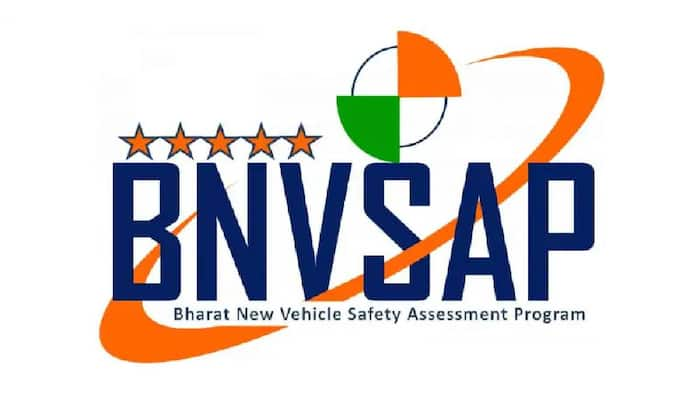
Written By Om Gupta
Published By: Om Gupta | Published: Oct 01, 2023, 12:45 PM (IST)

India has launched a new programme to assess the safety of cars in case of a collision. The programme called the Bharat New Car Assessment Programme (NCAP), will give cars a star rating from one to five based on how well they protect the occupants and what safety features they have. The programme is voluntary and will start from October 1, 2023. The Bharat NCAP is based on the Global NCAP, which is a project of a U.K.-based NGO that works to improve car safety worldwide. The Global NCAP has tested more than 50 car models for the Indian market since 2014 and found that many of them failed to meet the minimum safety standards. The Bharat NCAP aims to help consumers make informed choices and encourage car manufacturers to produce safer cars.
The Bharat NCAP will test cars according to the Automotive Industry Standard 197, which will be published soon. The programme will apply to passenger vehicles with up to eight seats and a weight of less than 3,500 kgs. Only the base model of a car variant will be tested.
The cars will be evaluated on three parameters: adult occupant protection, child occupant protection and safety assist technologies. The first two parameters will be measured by three types of tests: a frontal offset test, a side impact test and a pole-side impact test. These tests will simulate different kinds of crashes at different speeds and angles. The third parameter will check the presence of safety features such as airbags, anti-lock braking system, seatbelt reminder and reverse parking sensors.
The cars will be given a star rating from one to five for each parameter and an overall rating. The higher the rating, the safer the car.
The Bharat NCAP is voluntary, but some cars may be selected for testing by the Ministry of Road Transport and Highways based on their popularity, market feedback or public safety interest. The ministry says that 30 car models have been offered by car manufacturers for testing under the Bharat NCAP.
The criteria for getting a five-star safety rating for a car are different in Bharat NCAP and Global NCAP. Bharat NCAP requires a car to score at least 27 points out of 49 for adult occupant protection and at least 41 points out of 49 for child occupant protection. Global NCAP requires a car to score at least 34 points out of 49 for adult occupant protection, including 16 points for the front crash test, 16 points for the side impact, and two points for seatbelt reminders. Therefore, a car that gets a five-star rating in Bharat NCAP may not get the same rating in Global NCAP.
In addition to this, the Bharat NCAP sets the speed for the offset frontal impact at 64kmph, the side impact at 50kmph, and the pole side impact at 29kmph. These speeds are slightly different from the Euro NCAP, which uses 50kmph, 60kmph, and 32kmph respectively. The reason for the different crash speeds is that different regions and countries have their own regulatory bodies and standards for vehicle safety. The Euro NCAP operates within the European regulatory framework, which has different safety requirements than other regions like the US, Japan, or Australia. These regional differences can lead to variations in testing methodologies, including crash test speeds.
Bharat NCAP is different from Global NCAP in another way. Global NCAP is a private company that is funded by charities and car companies, while Bharat NCAP is a government-run agency that is supported by the Ministry of Road Transport and Highways (MoRTH). This means that Bharat NCAP has more authority and responsibility to ensure the safety of the Indian car market.
One notable difference between the Bharat NCAP and the other NCAPs is the absence of pedestrian safety tests. The other NCAPs include pedestrian safety assessments with tests involving child headform and lower legform impacts on bumpers, all conducted at 40kmph. These tests evaluate the potential injuries to pedestrians in case of a vehicle collision. The lack of pedestrian safety tests in the Bharat NCAP reflects a lack of focus on vulnerable road users, especially in underdeveloped regions with poor-quality pedestrian sidewalks and infrastructure.
The Euro NCAP takes the lead in this regard, accounting for vulnerable road users like pedestrians and bicyclists. It also emphasises safety assist technologies, including automated emergency braking (AEB) systems and city systems.
The Bharat NCAP is part of India’s efforts to reduce road fatalities, which are among the highest in the world. According to a World Bank study, road crashes cost India between 5 to 7% of its GDP every year. The Bharat NCAP hopes to raise awareness and demand for safer cars in India and save lives.